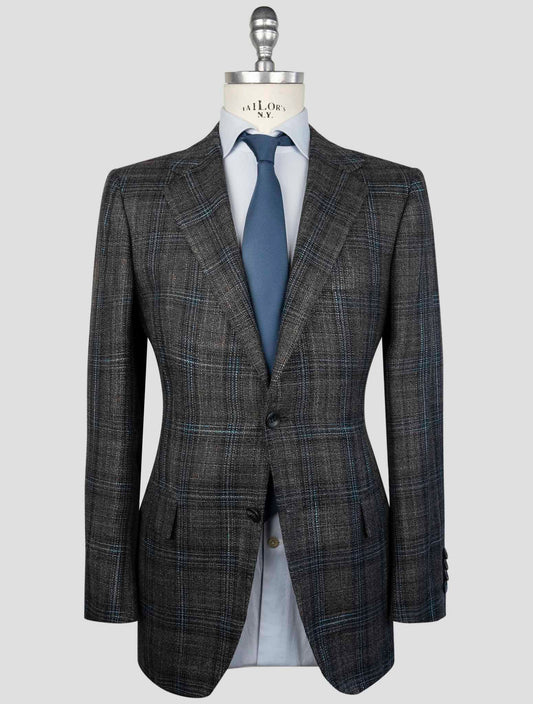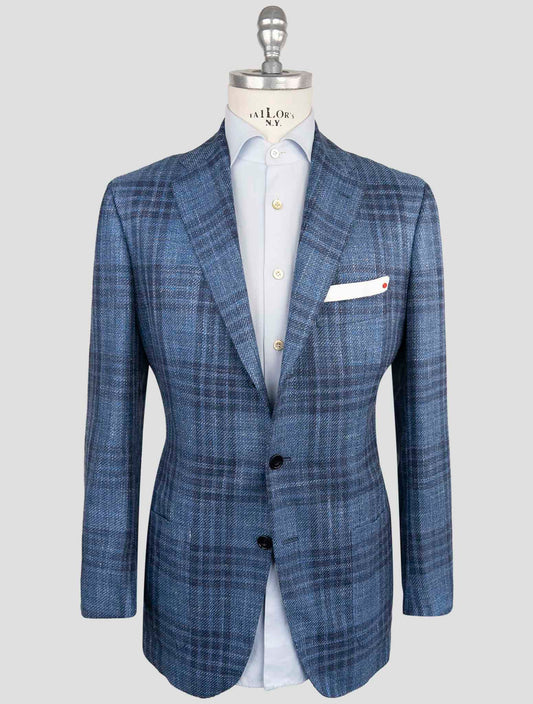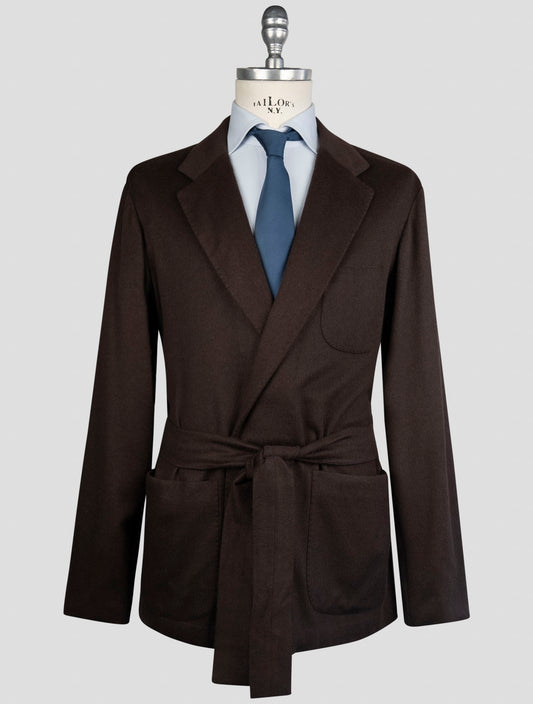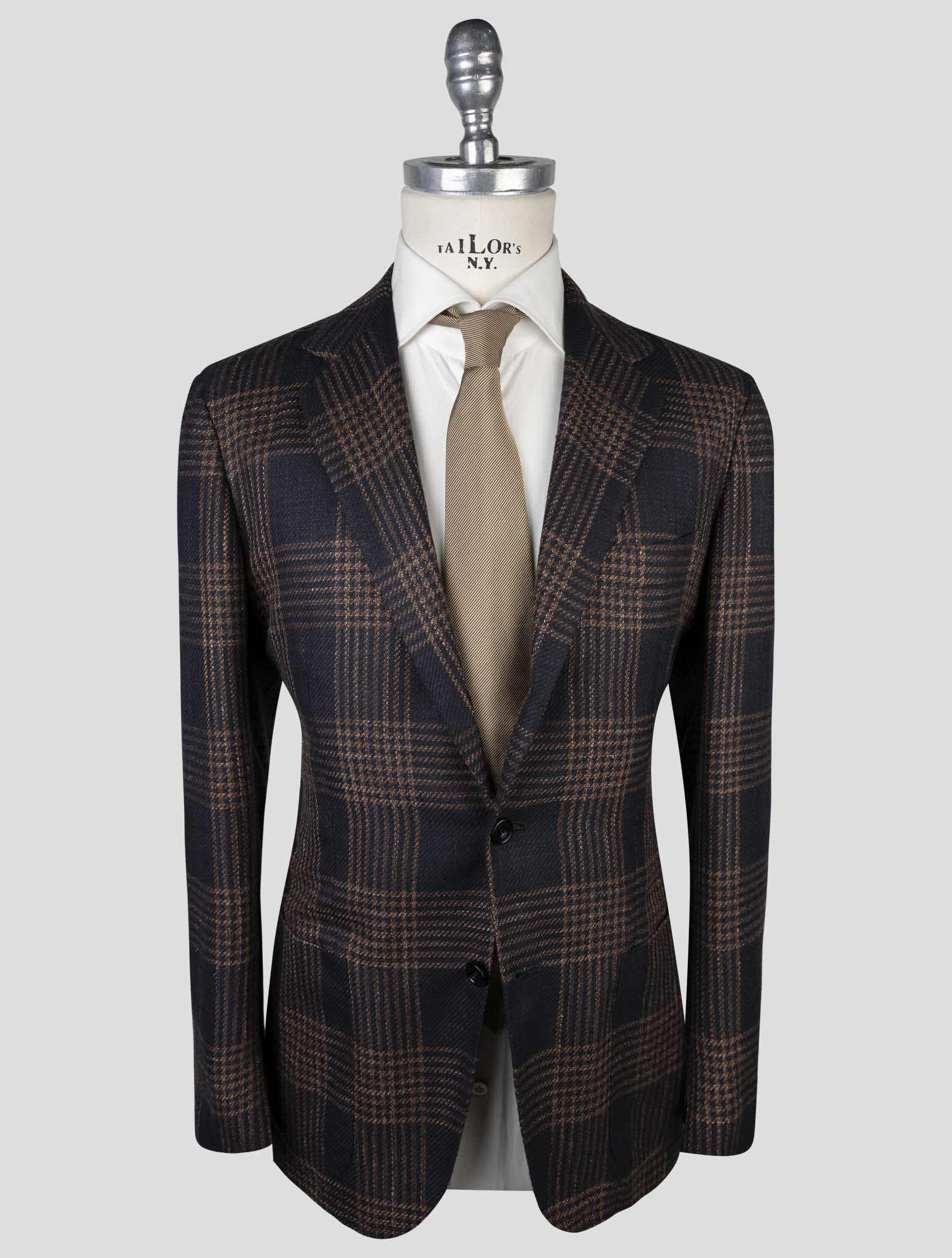Winter Garment Storage Tips 2025: Protecting Luxury Suits, Cashmere, and Wool With Italian-Level Care
Premium winter wardrobes in 2025 are anchored by Italian-crafted suits, cashmere knits, and high-twist wools—materials celebrated in FW 2025 menswear coverage for their warmth, refined handle, and longevity. These same qualities make them sensitive to moths, moisture, and compression during off-season storage. This guide distills expert, fabric-specific methods to preserve drape, surface finish, and structure—so your investment pieces look fresh when temperatures dip again.
Key Takeaways / Summary
- Why storage matters in 2025: Cashmere and wool continue to dominate FW 2025 menswear; these natural fibers are moth-attractive and can flatten under pressure. Use breathable storage and avoid compression to maintain loft and drape. See FW 2025 luxury fabric trends.
- Pre-storage checklist: Clean garments, de-pill cashmere, air out thoroughly, repair loose seams and buttons, then store. Time this at season’s end to keep items moth-safe. Reference the seasonal wardrobe transition checklist.
- Fabric-first approach: Tailored suiting and delicate blends need structured, wide-shoulder hangers and breathable covers—never plastic. For details, review fabric-specific suit care.
- What to look for in storage gear:
- Breathable garment bags (cotton/canvas), wide-shoulder suit hangers, acid-free tissue, cedar or natural moth deterrents, low-compression sweater boxes, cotton dust bags.
- Moisture control (desiccant), darkness, consistent cool temperature, and good air circulation.
- Best features: Structured hangers with shoulder flare for tailored jackets; acid-free tissue to preserve surface finish; cedar blocks or sachets to deter pests; zippered, breathable bags to prevent dust while allowing airflow.
- Budget tiers (no specific brands):
- Entry: Solid-wood or molded suit hangers, basic cotton garment bags, simple cedar blocks.
- Mid: Contoured wooden hangers with wider shoulder flare, premium breathable bags, archival tissue and sweater boxes.
- Premium: Hand-shaped hangers sized to your shoulder, fully canvassed garment covers, high-grade cedar inserts, and climate-monitored storage.
- What to avoid: Plastic dry-cleaner bags, vacuum storage for wool/cashmere, storing while soiled or damp, cramped closets that crush tailoring, direct light, and uncontrolled humidity.
- Italian craftsmanship mindset: Treat high-twist wool and cashmere with the same precision they were made with—store tailored pieces on wide-shoulder hangers and keep knits folded and uncompressed to preserve their architecture and hand-feel.
Why proper winter storage matters in 2025
FW 2025 menswear continues its emphasis on high-quality natural fibers—cashmere, virgin wool, silk blends—often crafted by Italian houses that prioritize handwork, canvas structure, and fabric provenance. These fibers provide warmth without bulk, but they’re also protein-based (keratin), which attracts moths. Their loft and finish are sensitive to compression and moisture. In short: your storage routine is as important as your cleaning routine. For context on fabric priorities this season, see our FW 2025 luxury fabric trends.
Shown are cashmere-wool-silk blends typical of FW 2025 tailoring: cashmere for softness, high-twist wool for resilience and drape, and silk for a subtle sheen—materials that reward careful, breathable storage.
Timing and workflow: the end-of-season routine
Think of storage as the final step in your winter rotation. A deliberate sequence prevents damage while garments are out of sight:
- Clean: Remove body oils, food traces, and perspiration. Moths hunt by scent; invisible soil attracts them. After dry cleaning, remove plastic immediately.
- Rest and air: Hang garments in a well-ventilated space for 24 hours post-cleaning. Ensure items are fully dry before storage.
- Repair and refresh: Replace missing buttons, check seam integrity, and de-pill cashmere with a light touch to preserve its nap.
- Stage by category: Hang tailored suiting and coats; fold knits and scarves. Prep storage containers and deterrents in advance.
- Store by fabric and weight: Keep heavier items in breathable covers; stack lighter knits to minimize pressure.
For a step-by-step seasonal plan, use our seasonal wardrobe transition checklist.
Suit and blazer storage: preserve drape and shoulder shape
Italian tailoring (think fully canvassed structures, hand-set shoulders, and light canvases) depends on silhouette integrity. Storage must respect the garment’s architecture:
- Use wide-shoulder, contoured hangers. The shoulder flare should match your natural shoulder breadth to support the sleeve head and padding. Too-narrow hangers create divots and collapse the roll; too-wide distort armholes.
- Button stance: Store jackets unbuttoned to avoid tension at the waist and to keep the lapel roll relaxed.
- Jackets and trousers together: Hang trousers by the hem or along the crease to minimize new pressure lines. Avoid metal clips directly on fabric; if used, add felt guards.
- Breathable bag, not plastic: Choose cotton/canvas garment bags with a zipper closure. Plastic traps moisture and can develop a stale odor or soften adhesives over time.
- Space to breathe: Do not crowd suits. Compression flattens canvassing and disturbs lapel roll.
- Brush before storage: Use a gentle horsehair clothing brush to remove lint and dust from the nap, especially on flannel and cashmere blends.
Dive deeper into how fabric dictates care in fabric-specific suit care. If your winter rotation includes cashmere-silk blends, treat them as delicate: minimal friction, careful handling, and breathable protection.
Cashmere and wool knitwear: fold, don’t hang
Cashmere and fine wools are prone to stretch if hung. Folding is non-negotiable:
- Clean and de-pill: After cleaning, lightly de-pill with a dedicated comb or sweater shaver. Work gently and in one direction to protect the surface.
- Acid-free tissue: Interleave with acid-free tissue between folds to minimize friction and preserve the hand.
- Low compression: Use shallow, breathable boxes; avoid heavy stacks that crush loft. Cashmere’s warmth comes from trapped air—don’t compact it.
- Moth deterrents: Place cedar or herb sachets in the box corners (not in direct contact with fabric). Refresh or replace seasonally.
- Label and rotate: Mark boxes with contents. Rotate placement every few months to avoid long-term pressure on the same fold lines.
For buying and care guidance on premium knits, explore our care tips for premium cashmere sweaters.
Outerwear (wool/cashmere coats): shape retention and airflow
- Hangers with structure: Choose wide-shoulder hangers that mimic the coat’s anatomy. Coats are heavy—support them to prevent collar collapse and shoulder bumps.
- Empty the pockets: Stored items distort the drape and can stretch pocket bags.
- Breathable covers: Cotton/canvas garment bags protect from dust while allowing moisture to dissipate.
- Room to hang: Give coats extra space; their pile and nap (especially on brushed wools) mat down if squeezed.
- Avoid hook loops: Hang by the shoulders, not by the internal locker loop, which can deform the collar over time.
Shirts, base layers, and flannel
- Clean and button: Launder, then button the second and last buttons to preserve placket shape if hanging short-term.
- Long-term: Fold with tissue; stack lightly. Avoid plastic bins unless well-vented and humidity-controlled.
- Flannel: Brush before storage to lift the nap and remove lint that can attract pests.
- Starch sparingly: Heavy starch can attract soil and feel brittle after months; keep it light if storing.
Leather and suede: condition and isolate
- Condition leather: Use an appropriate, light conditioner before a long break. Let it absorb fully and buff dry.
- Shape: Hang on robust, rounded hangers. For suede, avoid plastic covers; prefer breathable, dust-resistant cotton.
- Avoid cedar contact with leather: Cedar can dry out leather if used in direct contact. Keep cedar blocks nearby, not touching.
- Ventilation: Store away from heat sources and strong light. Slip acid-free tissue in sleeves to maintain shape if needed.
Footwear and accessories
- Shoe trees: Use unfinished cedar trees for boots and dress shoes to maintain shape and absorb residual moisture.
- Scarves, hats, and gloves: Clean according to fiber. Fold scarves with tissue; store hats in boxes that support the crown and brim.
- Belts: Coil loosely and store flat or hang on a peg. Avoid tight coils that set creases.
- Ties: Roll loosely from the narrow end and store flat in a breathable drawer; avoid tight knots or clips that crease silk.
Moth prevention: smart, low-odor strategy
Moths are attracted to keratin in wool/cashmere. Eliminate food sources and deploy deterrents:
- Clean before storage: A pristine garment is your first line of defense.
- Natural deterrents: Cedar, lavender, and certain herb sachets discourage pests. Refresh cedar by lightly sanding the surface every season.
- Containment: Use breathable bags and lidded boxes. Aim for dark, cool, and low-traffic storage spaces.
- Inspection schedule: Check storage monthly for signs (webbing, larvae, pinholes). Early detection prevents major losses.
- Quarantine and freeze if needed: If you suspect activity, seal the item in a bag and freeze for 72 hours, thaw for 24 hours, then freeze again to interrupt the life cycle before re-storing.
- Avoid mothballs: Naphthalene and paradichlorobenzene are toxic and leave persistent odors; prefer natural, low-odor methods.
Humidity, temperature, and light
- Humidity: Aim for 45–55% relative humidity. Too-dry can make fibers brittle; too-damp invites mildew. Consider passive desiccants in closed containers (not touching garments).
- Temperature: Keep it consistent and cool—roughly 16–21°C (60–70°F). Avoid attics or garages with extreme swings.
- Light: Keep away from direct sunlight; UV fades dyes and weakens fibers over time.
- Airflow: Even in garment bags, some air exchange is healthy. Do not seal natural fibers in airtight plastic.
Hanger selection by category
- Tailored jackets/coats: Wide-shoulder (2.5–4 cm shoulder flare), contoured, solid wood. Match hanger width to your shoulder seam-to-seam measurement (typically 42–47 cm / 16.5–18.5 in) to prevent overhang or droop.
- Trousers: Felted bar or clamp. For creased trousers, hang along the crease to preserve line.
- Knitwear: Do not hang long term. Fold with tissue.
- Shirts: Slim wooden or high-quality molded hangers for short-term; fold long-term.
Why this precision? Tailored fabrics and canvassing respond to how weight is distributed—especially true for high-twist wools and cashmere blends exemplified in our fabric-specific suit care guide.
Garment bags and boxes: breathable beats plastic
- Garment bags: Cotton or canvas with a smooth interior. Zip closures keep dust out but allow air exchange. Avoid dry-cleaner plastics; they trap moisture and can cause musty odors.
- Archival boxes: For precious knits and accessories, use acid-free boxes with acid-free tissue interleaving. Label contents for easy rotation.
- Desiccants: In closed boxes, a small desiccant can prevent dampness. Keep away from direct garment contact.
- Practical alternative: In a pinch, clean cotton pillowcases make breathable dust covers for single garments.
Folding techniques for sweaters and scarves
Minimal creasing and low compression matter. Try this fold for sweaters:
- Lay flat, face down. Smooth seams gently.
- Fold sleeves across the back without stretching the cuff.
- Place a sheet of acid-free tissue over the torso.
- Fold the bottom hem up once or twice depending on depth of your box.
- Stack a few pieces with tissue between each layer.
For scarves, roll loosely with tissue to prevent sharp fold lines on delicate cashmere gauze or brushed wool. Avoid rubber bands and tight ties that crush fibers.
Cleaning and pressing before storage
- Dry clean tailored garments at season’s end to remove oils that attract moths—especially suits, sport coats, and wool coats. Avoid over-cleaning during the season; steaming and brushing handle light refreshes.
- Steam lightly to refresh the fibers and relax minor wrinkles. Do not press sharp new creases where none existed; use a press cloth if ironing.
- Let everything breathe for 24 hours before entering a garment bag or box.
Space planning: closet ergonomics for winter storage
- Dedicated rail for tailoring: Keep suits and coats on the least-accessed rail to avoid friction.
- Upper shelf for boxes: Store folded knits in labeled archival boxes on an upper shelf away from heaters or vents.
- Air gap: Leave a few centimeters between hangers to prevent pile crush and allow air circulation.
- Location matters: Avoid closets adjacent to kitchens or bathrooms where humidity and food odors are higher.
Italian craftsmanship mindset: store like a sartoria would
The precision put into Italian tailoring—canvas selection, stitching density, pressing technique—should be mirrored in your storage. Suits and blazers depend on structural memory; wide-shoulder hangers and breathable covers preserve that memory. Cashmere’s hand and loft reflect the finesse of its fibers; folding with tissue and avoiding compression preserves the sensation that drew you to it in the first place.
For a lens on which fabrics deserve extra care, revisit FW 2025 luxury fabric trends.
Budget-conscious vs. premium storage: where to invest
Value, in luxury garment care, comes from preventing damage. Allocate your budget where performance is highest:
- Essential spend (budget): A small set of wide-shoulder hangers for tailoring, a few breathable garment bags, cedar blocks/sachets, and acid-free tissue. This covers 80% of risk for most wardrobes.
- Enhanced protection (mid): Add archival sweater boxes, more precise hanger sizing, and desiccants for enclosed spaces. You’ll see fewer pressure marks and less maintenance next season.
- Collector-level (premium): Hand-shaped hangers per garment, climate-monitored wardrobe or cabinet, and dedicated storage for exceptional pieces (e.g., unstructured cashmere-silk jackets). This level mirrors a sartoria’s backroom care.
Common mistakes to avoid
- Storing while dirty or damp: The most frequent cause of moth damage and mildew.
- Using plastic dry-cleaner bags: They trap moisture, can off-gas, and degrade finishes.
- Hanging knits: Leads to stretch and shoulder points.
- Over-packing closets: Compression flattens structure and pile.
- Ignoring inspections: Early signs of moths are easy to miss; monthly checks save garments.
End-of-winter storage checklist
- Sort by fabric: tailoring (hang), knits (fold), shirts (fold for long-term), coats (hang).
- Clean and air: Everything must be clean and completely dry.
- Repair: Buttons, seams, and minor snags addressed now.
- Prepare storage: Hangers, bags, boxes, tissue, cedar/desiccant ready.
- Pack and label: Breathable coverage; boxes labeled; space left for airflow.
- Set reminders: Inspect monthly. Refresh cedar each season.
Further reading on fabrics, craftsmanship, and seasonal rotation
- FW 2025 luxury fabric trends — Why 2025 winter fabrics need careful storage.
- fabric-specific suit care — Suit fabric choices and how they shape storage decisions.
- seasonal wardrobe transition checklist — Timing and workflow you can reuse each year.
- care tips for premium cashmere sweaters — De-pilling, folding, and storage specifics for cashmere.














